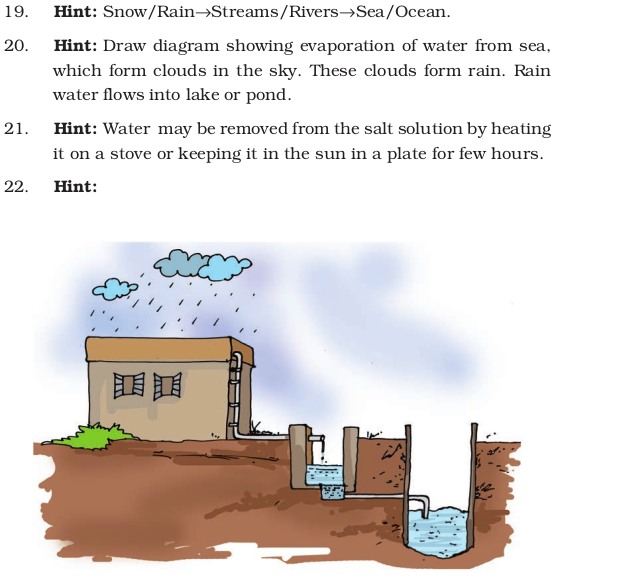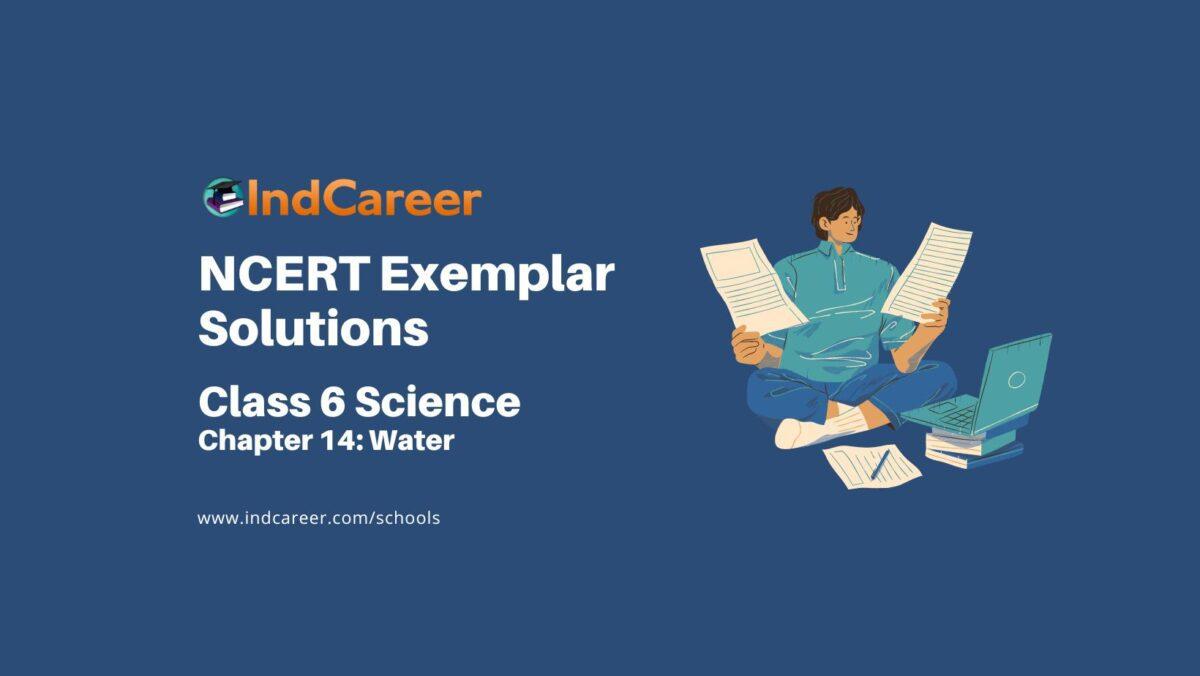NCERT Exemplar Class 6 Science Chapter 14: Water. NCERT Exemplar Solutions for Class 6 Science Chapter 14 Water prepare students for their Class 6 exams thoroughly.
Science problems and solutions for the Class 6 pdf are provided here which are similar to the questions being asked in the previous year’s board.
Contents
NCERT Exemplar Class 6 Science Chapter 14: Water
Class 6: Science Chapter 14 solutions. Complete Class 6 Science Chapter 14 Notes.
Multiple Choice Questions
- Which of the following activity does not involve use of water?
- (a) Washing clothes
- (b) Bathing
- (c) Cleaning utensils
- (d) Drying wet clothes
- In which of the following activities will you use minimum amount of water?
- (a) Bathing
- (b) Brushing teeth
- (c) Washing clothes
- (d) Mopping a room
- The quantity of water required to produce one page of your book is
- (a) one bucket
- (b) ten buckets
- (c) two glasses
- (d) few drops
- Water in our tap comes from a
- (a) river
- (b) lake
- (c) well
- (d) river, lake or well
- In which of the following case evaporation of water will be slowest?
- (a) A tray of water kept in sunlight.
- (b) A kettle of water kept on a burner.
- (c) A glass of water kept in a room.
- (d) A bucket of water kept on rooftop.
- Transpiration is a process in which plants
- (a) receive water from soil.
- (b) absorb water vapour from air.
- (c) prepare food from water.
- (d) release water vapour.
- Clouds are
- (a) tiny drops of water floating in air.
- (b) mixture of dust and water vapour.
- (c) particles of water vapour.
- (d) rain drops in air.
- Wells are fed by
- (a) pond water.
- (b) lake water.
- (c) rain water.
- (d) ground water.
- Floods cause extensive damage to
- (a) crops.
- (b) property and human life.
- (c) domestic animals.
- (d) all of the above.
- “Catch water where it falls” is the basic idea behind
- (a) recycling of water.
- (b) making dams to store water.
- (c) rain water harvesting.
- (d) condensation of water vapour.
Very Short Answer Type Questions
- Look at Fig. 14.1.

Write down activities shown in this figure in which water is being used. - Write any two activities which require more than a bucket of water.
- Write any two activities which require less than one bucket of water.
Short Answer Type Questions
- Why do wet clothes placed on a clothes line get dry after some time? Explain.
- Water kept in sunlight gets heat from sun and is evaporated. But how does water kept under the shade of a tree also gets evaporated? Explain.
- How do the areas covered with concrete affect the availability of ground water?
- Why is there a need for conserving water? Give two reasons.
- Fill in the blanks selecting words from the following list snow, rain, clouds, vapour, evaporation, transpiration.
Water, as _____ goes into atmosphere by the processes of ______ and _____ and forms ________, which on condensation fall in the form of ______ and _______.
Long Answer Type Questions
- Most of the water that falls on the land as rain and snow, sooner or later goes back to a sea or an ocean. Explain how it happens?
- Draw a diagram to show how sea water reaches a lake or pond.
- Dissolve two spoons of common salt in half a cup of water. Now if you want to get the salt back, what will you do?
- Explain the process of rooftop rain water harvesting with the help of a suitable diagram.
Answers




